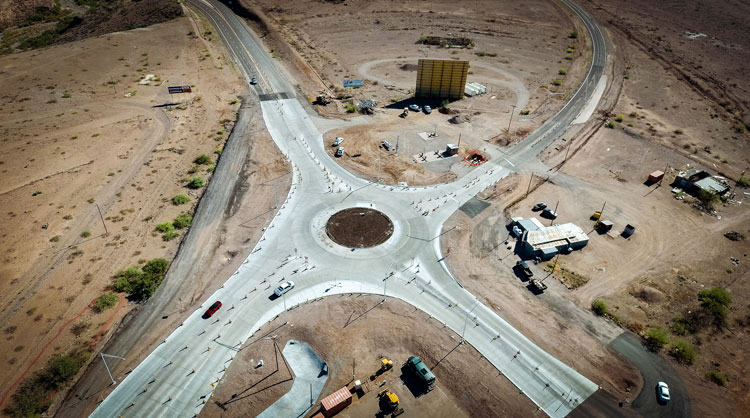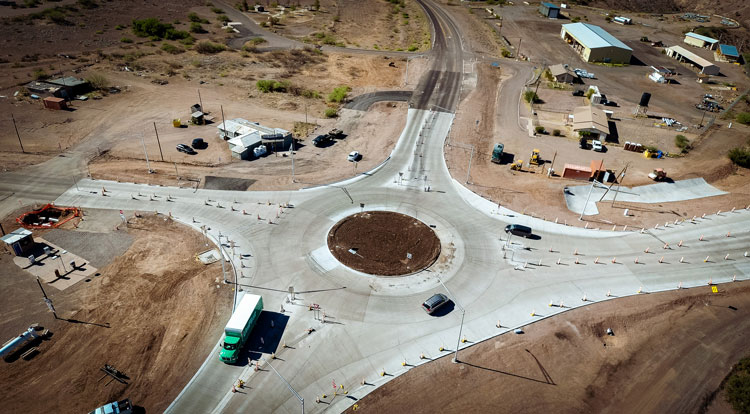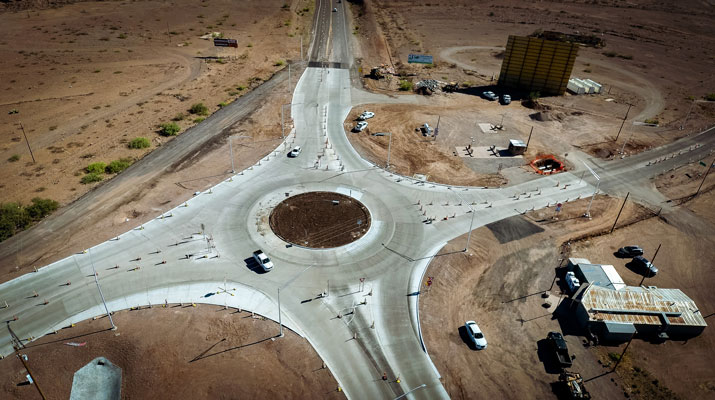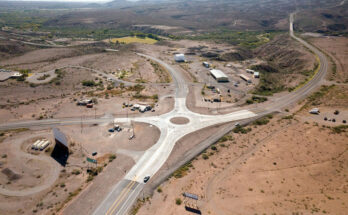By Jon Johnson
THREE WAY – Round and round we go.
Construction on the federally funded $6.5 million roundabout, which will replace the traditional stop-sign intersection connecting the Gila Valley with the Clifton/Morenci area, as well as Duncan and New Mexico, is nearly complete.
The roundabout is set to be fully finished by the end of July, according to Arizona Department of Transportation Public Information Officer Garin Groff. That puts it slightly past its original spring finish date. However, Groff advised that the project remains on budget.
The intersection of U.S. Highway 191 North, State Route 75, and State Route 78 – known as Three-Way is perhaps the ideal location for a roundabout, according to proponents.

The purpose of the project, according to the Arizona Department of Transportation (ADOT), is to enhance safety by improving sight distances and relieving traffic backups. With frequent large loads traveling through the area to the Freeport McMoRan Inc. Morenci Operations mine, the roundabout was specially designed to accommodate larger vehicles and loads.
Traffic is traveling through the new roundabout, but it is currently acting as a four-way stop until construction is complete.
According to the Insurance Institute for Highway Safety, studies have shown that roundabouts reduce injury crashes at intersections where they replaced stop signs or signals by 75%. The studies also showed a 90% reduction in fatal collisions and a 37% reduction in overall collisions.

Part of the reason for the less severe crashes is that vehicles slow down when entering a roundabout, and due to its circular nature, head-on collisions are rare.
Additionally, roundabouts do not require power like signals, eliminate hardware and electrical costs, and are much cheaper to maintain.









